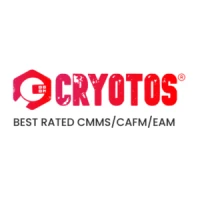Introduction
Maintenance Management Software (MMS) is a tool developed to streamline and enhance maintenance operations. It aids organizations in planning, tracking, and managing maintenance activities, ensuring the reliability and efficiency of equipment. Key features encompass asset management, work order management, preventive maintenance scheduling, inventory management, and reporting. MMS boosts operational efficiency, cuts costs, improves compliance, and supports data-driven decision-making across multiple industries, including manufacturing, healthcare, hospitality, and transportation.
What is Maintenance Management Software?
Maintenance Management Software is a tool designed to help organizations plan, track, and optimize their maintenance activities. It facilitates the scheduling of preventive maintenance, keeps a detailed record of all maintenance activities, and ensures that equipment is maintained efficiently. MMS can be applied across various industries, including manufacturing, healthcare, hospitality, and transportation.
Key Features of Maintenance Management Software
- Asset Management: MMS allows for comprehensive tracking of all assets, including equipment details, maintenance history, and lifecycle information. This helps in making informed decisions regarding repairs, replacements, and upgrades.
- Work Order Management: Creating, assigning, and tracking work orders is streamlined with MMS. This ensures that maintenance tasks are performed on time and reduces the chances of overlooking critical maintenance activities.
- Preventive Maintenance Scheduling: MMS enables the scheduling of routine maintenance tasks based on time intervals or usage metrics. This proactive approach helps prevent unexpected equipment failures and extends the lifespan of assets.
- Inventory Management: Efficient inventory management is crucial for maintenance operations. MMS tracks spare parts, tools, and other inventory items, ensuring that necessary supplies are available when needed.
- Reporting and Analytics: MMS provides detailed reports and analytics on maintenance activities, helping organizations identify trends, measure performance, and make data-driven decisions to improve efficiency.
- Mobile Accessibility: Modern MMS solutions often include mobile apps, allowing maintenance teams to access information, update work orders, and log activities from anywhere, enhancing flexibility and responsiveness.
Benefits of Implementing Maintenance Management Software
- Increased Efficiency: MMS automates many manual processes, reducing administrative burden and freeing up time for maintenance teams to focus on critical tasks.
- Cost Savings: By optimizing maintenance schedules and improving asset management, MMS helps reduce downtime, minimize repair costs, and extend the lifespan of equipment.
- Enhanced Compliance: For industries with strict regulatory requirements, MMS ensures that maintenance activities are documented and compliant with standards, reducing the risk of non-compliance penalties.
- Improved Asset Reliability: Regular maintenance and timely repairs keep equipment running smoothly, reducing the likelihood of unexpected breakdowns and increasing overall reliability.
- Data-Driven Decision Making: The reporting and analytics features of MMS provide valuable insights into maintenance performance, enabling organizations to make informed decisions to optimize their operations.
Impact on Various Industries
- Manufacturing: In the manufacturing sector, MMS is essential for maintaining the efficiency of production lines. It helps prevent costly downtimes, ensures equipment reliability, and supports lean manufacturing principles.
- Healthcare: For healthcare facilities, MMS ensures that medical equipment is properly maintained and complies with safety standards. This is crucial for patient safety and operational efficiency.
- Hospitality: Hotels and resorts use MMS to maintain their facilities, ensuring guest satisfaction and operational efficiency. From HVAC systems to elevators, MMS helps keep everything in top condition.
- Transportation: In the transportation industry, MMS is vital for maintaining vehicles and infrastructure. It ensures that buses, trains, and airplanes are safe and reliable, minimizing service disruptions.
Choosing the Right Maintenance Management Software
When selecting an MMS, organizations should consider their specific needs and requirements. Factors to consider include:
1. Scalability: The software should be able to grow with the organization and accommodate increasing maintenance demands.
- Ease of Use: A user-friendly interface is essential to ensure that the maintenance team can effectively utilize the software.
- Integration: The software should integrate seamlessly with other systems, such as Enterprise Resource Planning (ERP) and Internet of Things (IoT) platforms, to provide a comprehensive maintenance solution.
- Support and Training: Reliable customer support and comprehensive training resources are important to ensure successful implementation and ongoing use of the software.
Conclusion
Maintenance Management Software is a powerful tool that enhances the efficiency, reliability, and cost-effectiveness of maintenance operations across various industries. By automating and optimizing maintenance tasks, MMS helps organizations achieve their operational goals, improve asset reliability, and maintain compliance with regulatory standards. As technology continues to advance, the capabilities of MMS will only expand, further revolutionizing maintenance management and driving industry success.


